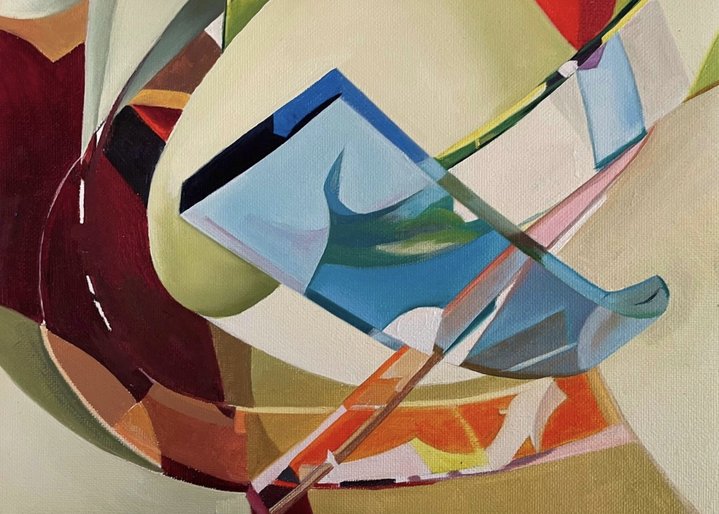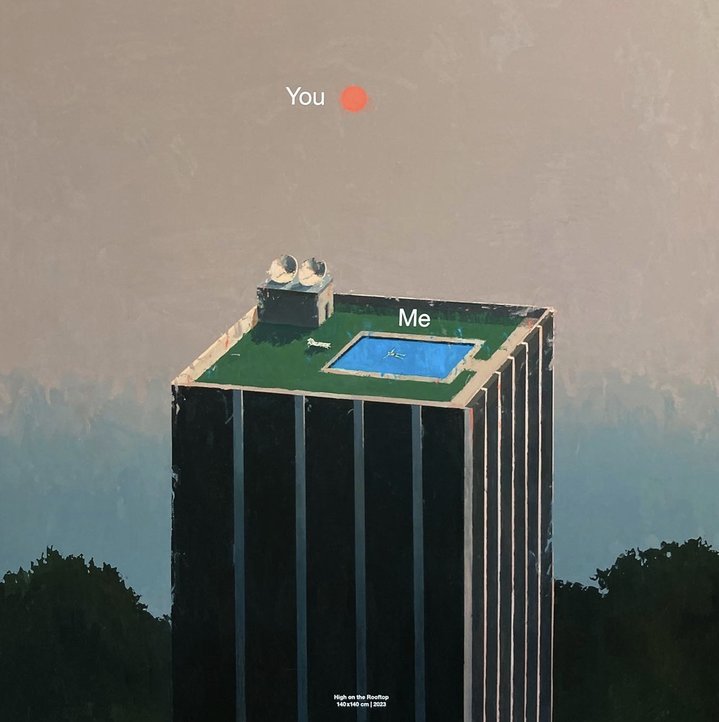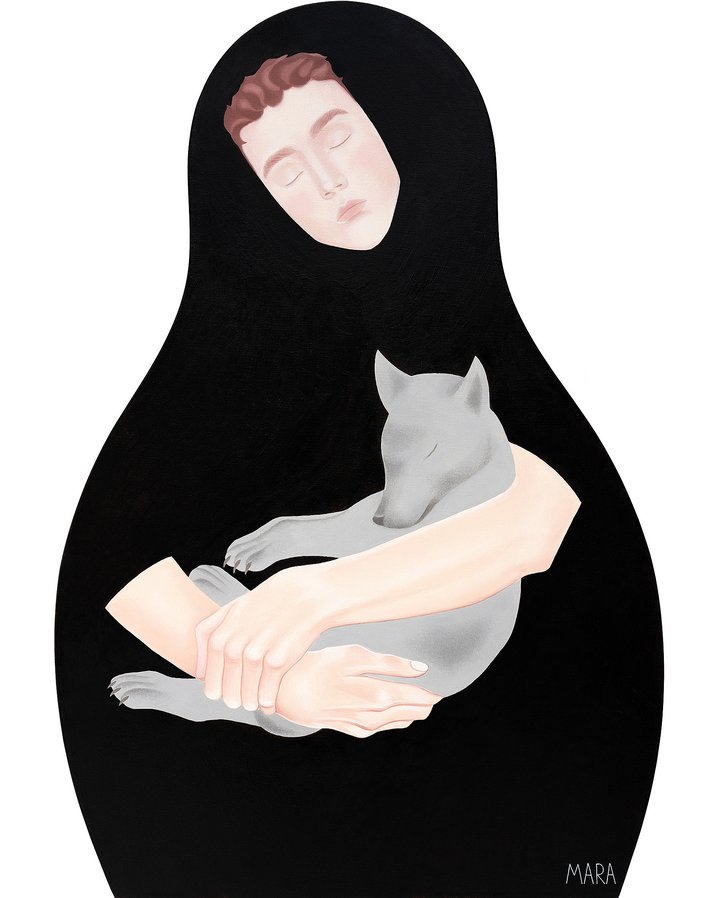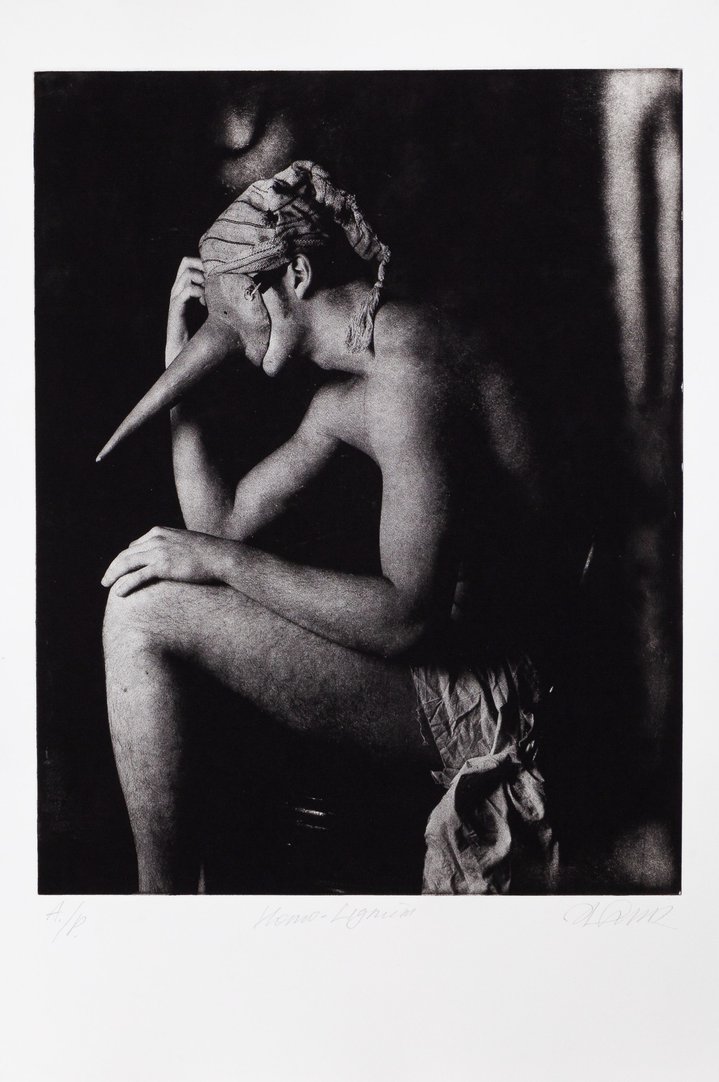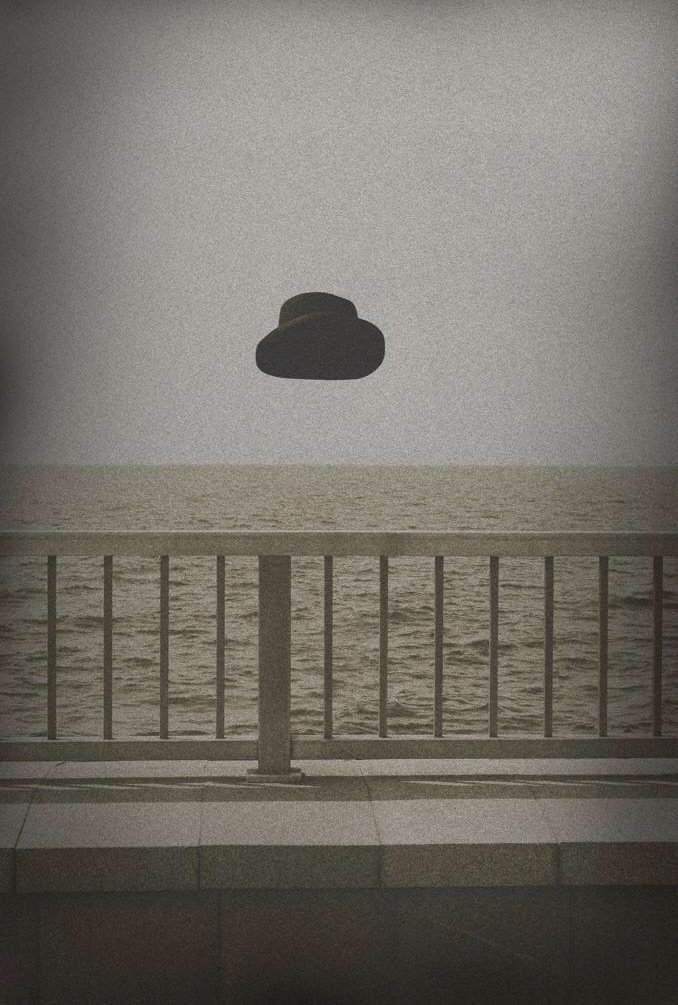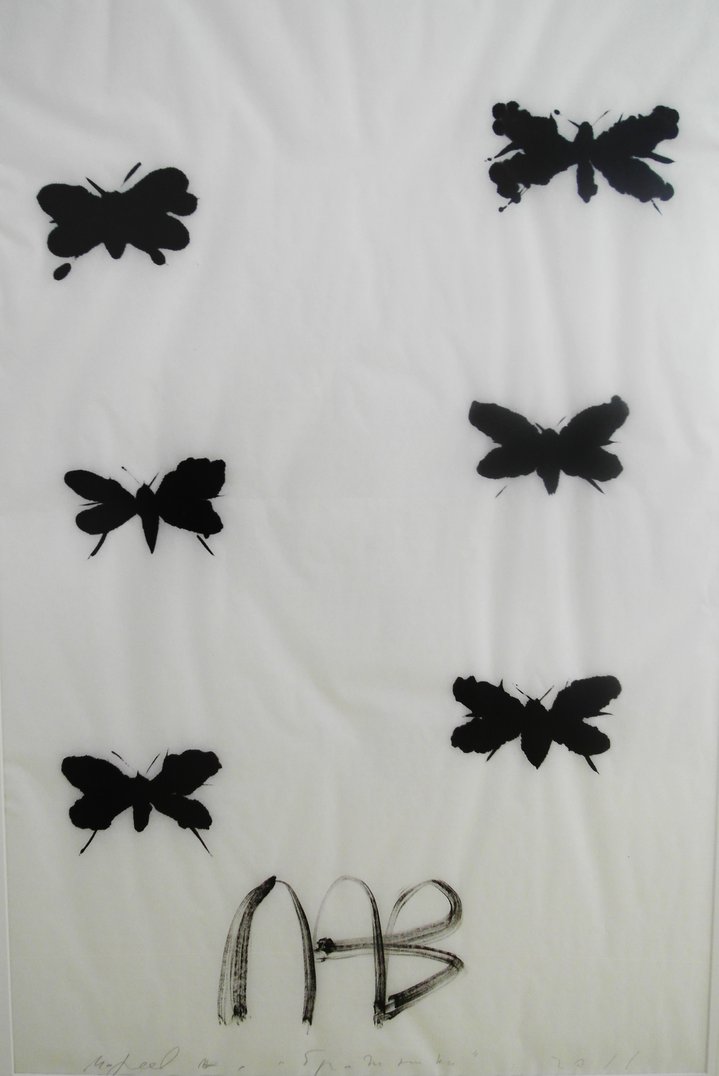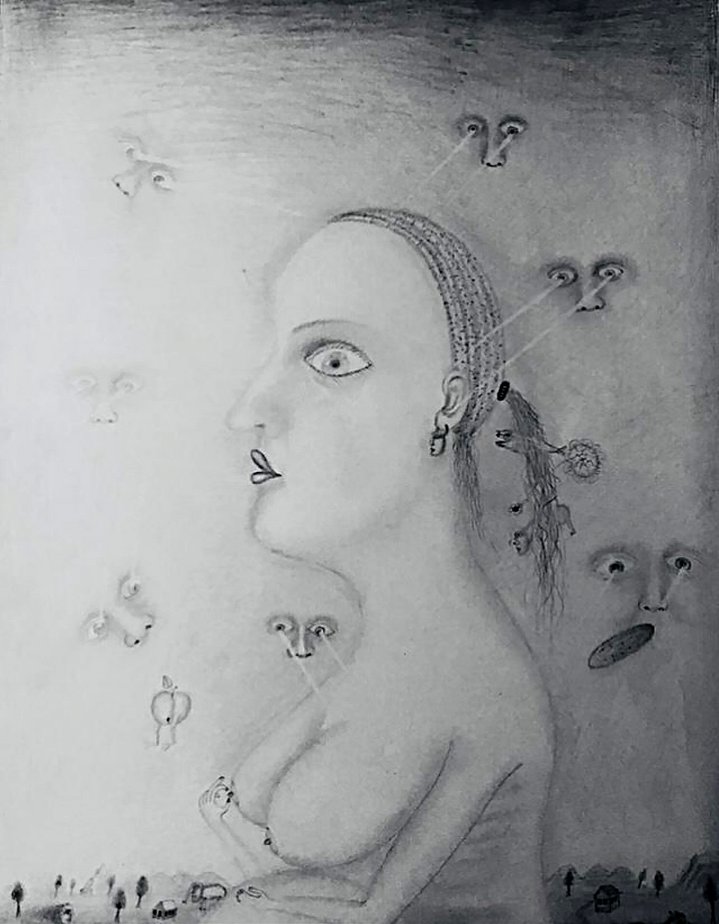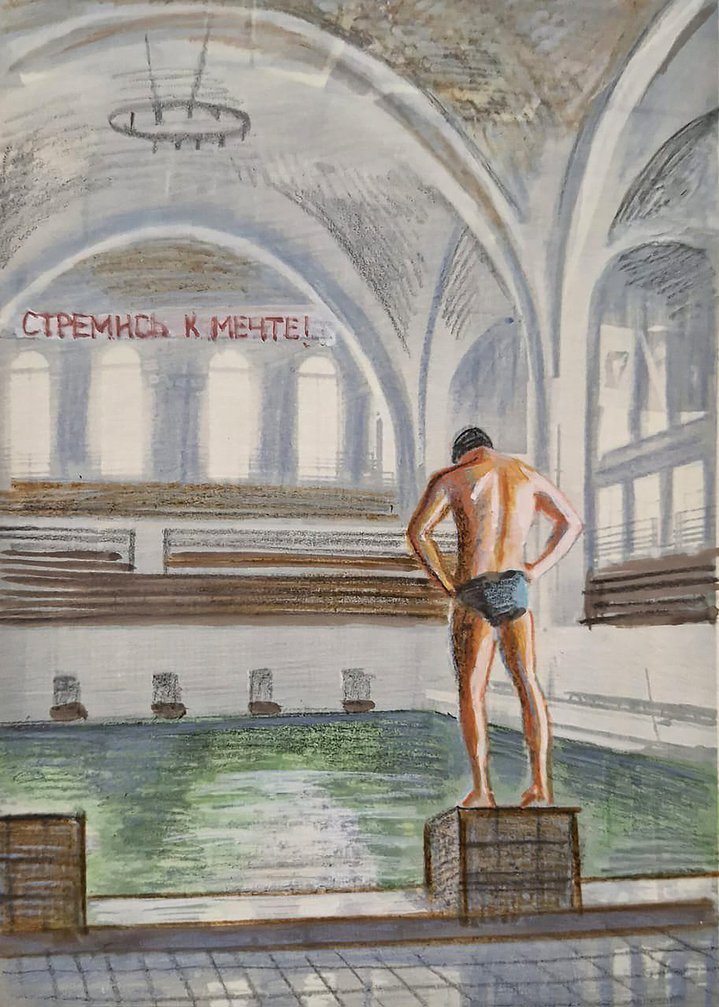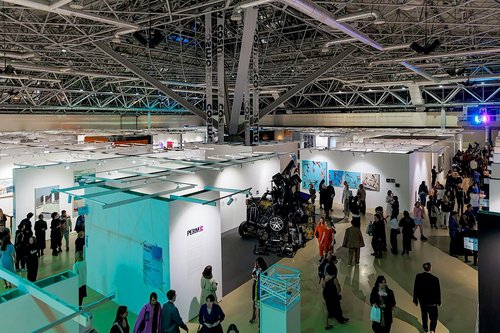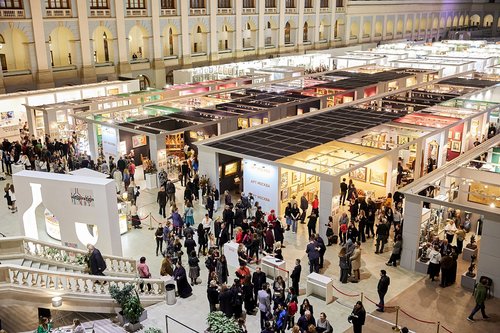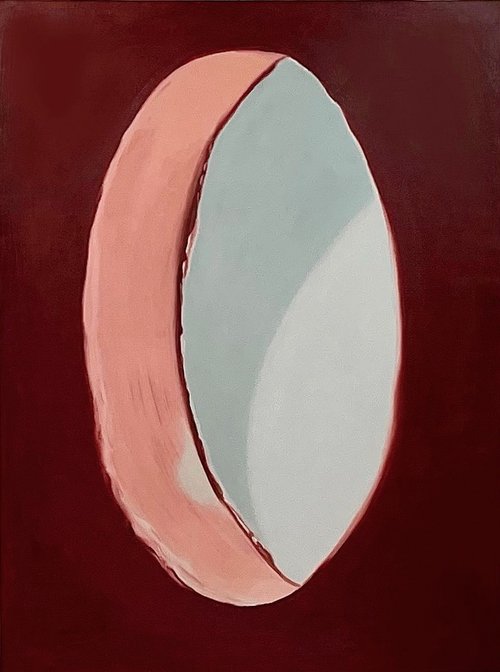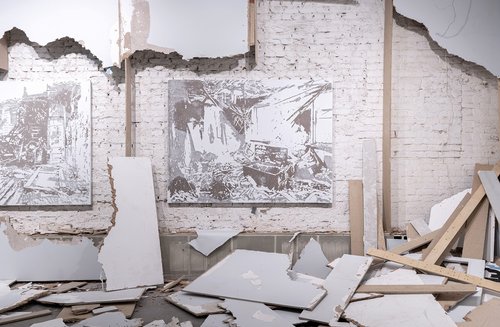Democracy in the Cold: a New Art Fair in Moscow

Andrey Chezhin. From the 'Harmsiada' series, 1995. Courtesy of Béton Center of Visual Culture
A small group of Russian art dealers have come together to establish a new art fair in Moscow called |catalog| which engenders equality, cooperation and inclusion. With the temperatures in Moscow reaching –10 degrees, the only thing it lacks is some decent heating.
What was once Sytin´s print store in Moscow is hosting /catalog/, a new art fair organized by a small group of dealers. The historical 120-year-old building is currently under renovation, its facade still wrapped under plastic banners and its interiors stripped bare. December being colder and snowier than usual in Moscow, with temperatures reaching double figures in the minus, there was a frosty chill in the air on preview day. Dressed up for the occasion in elegant evening clothes, art dealers were shivering with hopes not only of sales but that the organizers might bring them a strong drink and some heaters.
|Catalog| is the evolution of what was a test edition with the slightly quainter name of ´Little Winter Fair´ which was held last year at Vinzavod, a former winery converted to a gallery hub. Although the idea of a fair organized by dealers is nothing new on the global art market – this is how Art Basel started out - for the Russian market, it seems unprecedented. In Russia, art fairs are run by fair operators like Art Moscow or Cosmoscow or by a generous sponsor or art patron such as the 1703 fair in St.Petersburg which is funded by Gazprom or Contour, a fair dedicated to works on paper which was set up this year in Nizhny Novgorod. Many years ago, the Moscow World Fine Art Fund was run by a Swiss logistics company and ´DA!Moscow´ was the brainchild of a gallerist and auction house owner Vladimir Ovcharenko.
Launched by art dealers Alina Kryukova from A-S-T-R-A gallery, Dmitry Khankin from Triumph Gallery, Alexander Sharov from Gallery 11.12, and Vinzavod’s founder Sophia Trotsenko, |Catalog| has a different business model. It is built on a principle of democratic cooperation and inclusion: any art gallery can take part, not only members of the Association of Galleries (AGA). There are thirty-one participants, roughly half the number at Cosmoscow this year, which is the nation´s biggest contemporary art fair. All the top Moscow galleries are present, those absences which are felt most keenly are two St.Petersburg heavyweights Marina Gisich and Anna Nova; and the only participating gallery from outside Moscow is Futuro, a Nizhny Novgorod gallery showing local street artists. Future plans involve pop-up editions of the fair in other Russian cities to stimulate other regional art scenes. Faithful to its democratic aims, all booths are the same size and were allocated to galleries by way of a raffle. According to |catalog|’s PR agent Tatyana Nemirovskaya, the price of a booth is three times lower than at Cosmoscow.
Catering to new collectors who are more interested in works by emerging artists priced at less than 100,000 roubles/1,000 Euros (a trend seen recently at good sales at Blazar, Moscow´s fair for young artists) each gallery must show at least one young artist in its booth. There is also a separate booth dedicated to young artists who do not have gallery representation, alumni of Vinzavod’s Open Studios which nods to Blazar´s practice of giving young artists free booths where they can represent themselves. ´Young´ does not always mean ´emerging´: some booths feature museum-quality pieces by Y-generation artists. Vladey has given over its entire booth to Alisa Gorshenina (b. 1994) well-known in Russian art circles for her quirky objects inspired by Urals’ folklore. Pogodina Gallery is offering a lightbox/painting of a window, with a gentle, subdued light streaming through the curtains and silhouettes of house plants on a windowsill by Anna Lapshinova (b. 1996). Two works from the same series she made in 2021 called ´Home´ are currently on view at ´The Light´ in the State Tretyakov Gallery in Moscow.
Although in December there is always a preference for showing moderately priced works that are good as gifts, some top-tier artists are also present. Perhaps the most expensive work for sale at the fair is a recent, laconic large-scale drawing by Erik Bulatov (b. 1933) from 2019 with an asking price of 48,000 Euros. Look hard and there are some rare finds such as a painting and work on paper by Leonid Purygin (1951–1995) offered by Totibadze Gallery at 8,000 and 5,000 Euros respectively. The PiranesiLAB printing studio booth is a treasure trove, with one-off prints by Vladimir Dubossarsky (b. 1964) and other artists all hidden in a big chest of drawers. On the wall at the entrance of the booth hangs a landscape by Artyom Filatov, an artist from Nizhny Novgorod, made in an unusual technique: the surface can be scratched off, like the hidden section of a lottery ticket. The owner of the work can remove the paint with a coin to uncover the image underneath – or leave it and let the mystery live on. This work can be a symbol of the new fair itself. There certainly are surprises lurking under the surface.






